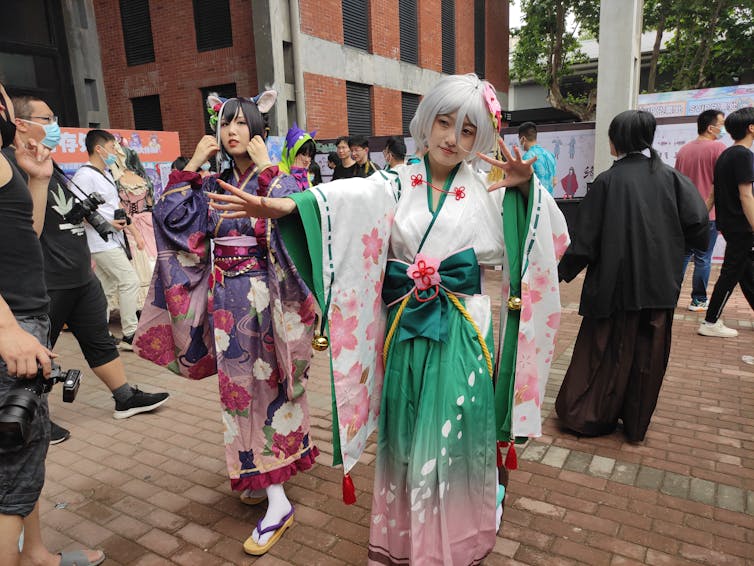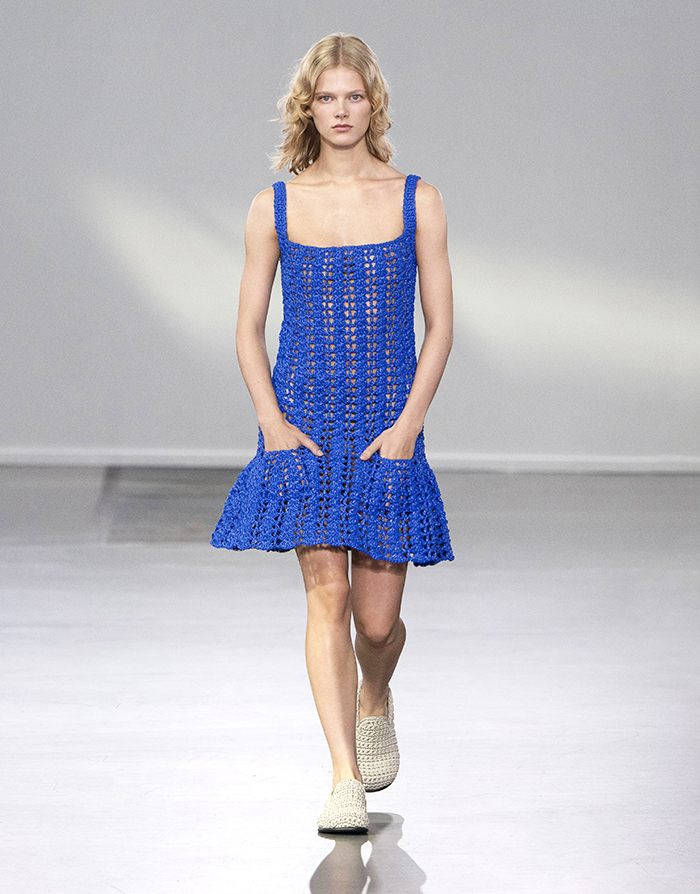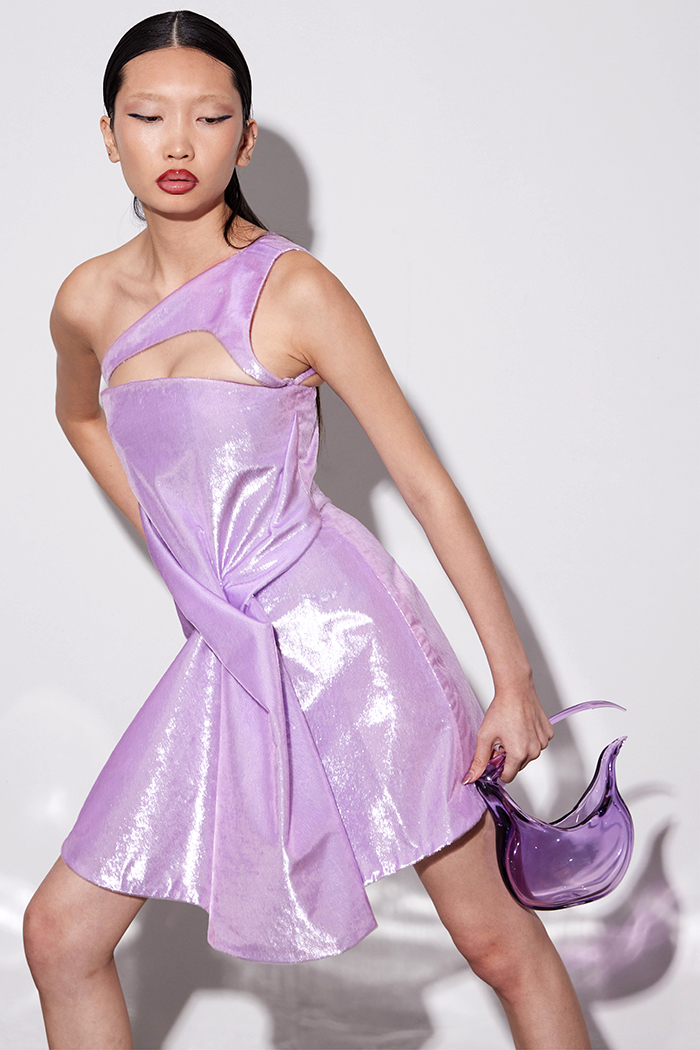Monday, 25 September 2023
Friday, 22 September 2023
China is Criminalising Clothing ‘Hurtful to the Spirit and Sentiments of the Nation' ~ Could this Mean a Kimono Ban?
 |
| Ryo Yokitashi/Unsplash |
By Antonia Finnane, University of Melbourne
In August 2022 a young woman wearing a yukata – a simple, summer-weight kimono – was having her photo taken on a street in picturesque Suzhou, China, when she was accosted by a police officer. Following an angry exchange, partly captured on her phone, she was arrested for disturbing the public peace.
The Suzhou Kimono Incident, as it came to be known, sparked an internet debate over the propriety of wearing kimonos and the legality of the policeman’s actions.
This was not the first time wearing a kimono in China had caused a furore, and it would not be the last. Another broke out in March this year, after a visitor to Nanjing, site of an infamous massacre by the Imperial Japanese Army in 1937, reported seeing a woman in a white kimono posing amidst the cherry blossoms in a Buddhist temple. He complained to the attendants, but they said it was merely a matter of ethics: after all, people were free to wear what they like.
That may soon change. A new draft law on public security published online at the beginning of this month includes a clause criminalising the wearing of clothes that might be “hurtful to the spirit and sentiments of the nation”. If the law is passed, offenders will face penalties of up to 5,000 yuan (A$1,000) and up to 15 days jail.
Draft laws, routinely posted for comment, rarely attract many responses. The response to this one has been huge, with around 100,000 submissions to date. Legal scholars in China have weighed in, pointing out the fuzziness of this clause and its openness to abuse by local law enforcers.
And as one Beijing lawyer intimated, the legislation seems directly aimed at the kimono.
A ‘hurtful’ kimono?
Half a century ago, the target of sartorial struggle in China was “strange clothing and outlandish dress” – tight pants were the example par excellence in the 1960s, succeeded by flares in the 1970s.
Such clothing was associated with the United States, the Soviet Union and Hong Kong, all sink-holes of decadence and natural enemies of China under Mao.
Things have changed. Soviet revisionists have morphed into Russian allies; Hong Kong has been swallowed up by the mainland; and with jeans and t-shirts now ubiquitous in China, the US is no longer open to attack on the sartorial front.
Enter Japan, with its spectacular array of distinctive cultural products, strong youth following across East Asia and a wartime history that since the 1980s has been leveraged to foment nationalism in China.
In 1980, Japanese movie star Nakano Ryoko received a rapturous welcome when she visited China. Over the next few years, Japan inspired and provided training for the first generation of post-Mao fashion designers, who helped lay the foundations for a now-flourishing industry.
In the mid-1980s, a fully accessorised kimono as a symbol of excellence in Japanese design was perfectly acceptable for publication in a Chinese magazine.
Simultaneously, however, a “new remembering” of Japanese wartime atrocities – specifically the Nanjing massacre – was emerging, soon to be endorsed by the ruling Communist Party. By the 1990s, a history that had been buried in the Mao years was being given full play.
All this helps explain the visceral responses to young Chinese women wearing kimonos today.
In April 2009, two high-impact films about the Nanjing massacre were released. Images of Japanese soldiers raping Chinese women were fresh in people’s minds when, in September, young model Ding Beili posted a photo of herself online wearing a kimono. She attracted a storm of criticism.
“With so many countries in the world to pick from,” asked one blogger, “why did she have to pick Japan?”

Why indeed? The answer lies in something else that came to China from Japan: cosplay, popular across East Asia. The girl of the Suzhou Kimono Incident was a cosplayer, performing a role from the Japanese anime Summer Time Rendering. Naturally, cosplayers view Japanese-inspired dress differently from their critics.
Among the great occasions for Chinese cosplay until recently were Japanese-style “summer festivals”, or matsuri. It was for a matsuri in Shanghai that Ding Beili donned a kimono in 2009. Increasingly popular in China in recent years, summer festivals were cancelled in at least seven cities in August 2022 under rising anti-Japanese sentiment.
Adding the US to the mix
The ultra-nationalist Hu Xijin, former editor of the Global Times, has dismissed the issue of the kimono in China as a matter of no consequence. “Little Japan,” in his view, is just “a lackey of the US”.
The US-Japan alliance undoubtedly exacerbates Chinese hostility towards Japan, a country that like Australia is an easier target for payback than the US. China’s response to the new tripartite agreement between Japan, South Korea and the US was to slap a ban on Japanese seafood imports, on stated grounds of health security.
The new draft law against “hurtful” dress was posted soon after the implementation of the seafood ban, leaving observers with a distinct impression of China as a place where people can neither eat Japanese fish nor wear Japanese clothes.
Older people must be reminded of a time half a century ago, when young people wearing “strange clothing and outlandish dress” were attacked on the streets, while seafood was hardly available at all.![]()
Antonia Finnane, Professor (honorary), The University of Melbourne
This article is republished from The Conversation under a Creative Commons license.
Subscribe to support our independent and original journalism, photography, artwork and film.
Monday, 18 September 2023
Tuesday, 12 September 2023
Kate Barton is Redefining American Eveningwear with Innovation and Sustainability
 |
| Kate Barton's shimmering new SS24 collection with its gleaming accessories and innovative materials, presented in New York. Cover picture by Anna Nguyen |
One of the highlights of New York Fashion Week was the new Spring/Summer 2024 collection by American designer Kate Barton. Her unique blend of innovation, technology, avant-garde draping, and shape engineering has made her sleekly futuristic designs a standout, writes Isabella Lancellotti
 |
Glimmering and gossamer-fine, the American designer's take on modern eveningwear |
Barton embraces a fabric-first philosophy that optimizes volume without resorting to unnecessary layering, resulting in a modern classicism that is both elegant and innovative.
What makes Barton's creations exemplary are her materials and craftsmanship. The Spring/Summer 2024 collection features chrome leather accessories and magnetized detachable enhancements, creating the illusion of metal while still ensuring practical wearability.
The introduction of crystal-encrusted sculptural belts adds a touch of opulence and whimsy, seamlessly blending sustainability, creativity, and unapologetic luxury. The designer wants to create a couture aesthetic with inventive sculptural garments, engineered materials, sustainable technology-driven cutting, and fabric manipulation.
What makes Kate Barton's creations exemplary are her fresh ideas, experiments with unusual materials and fine craftsmanship
 |
Exquisite draping and new materials make Barton's work a standout. |
During the pandemic, she had limited access to machinery and materials, which drove her to try out unusual materials and sustainable methods.
The designer wants to redefine eveningwear but also advocates for positive change. Her profile has grown inside and outside the fashion world as she gains recognition from her peers and the high-profile women she has designed gowns for, from Heidi Klum and Kat Graham to Paige DeSorbo, and Wallis Day.
Kate Barton's vision for the future of American eveningwear is clear. She is eager to continue explore the nature of luxury fashion, bringing a modern approach not often seen in this sector.
Her approach is refined each collection, as she evinces how new technology and materials can be utilized without compromising on style and luxury.
Subscribe to support our independent and original journalism, photography, artwork and film.
Monday, 11 September 2023
New York Fashion Week: AREA'S Ready-to-Wear and Couture AW23 Collection
 |
| The clever trompe l'oeil fabric made to look like luxurious fur, created by AREA, as part of their new collection, shown at New York Fashion Week. Photographs courtesy of Arena |
 |
It looks like fur but is a trompe l'oeil version created by Area |
 |
Resin bones encrusted with crystals become part of the fur-printed gown |
Subscribe to support our independent and original journalism, photography, artwork and film.


















































